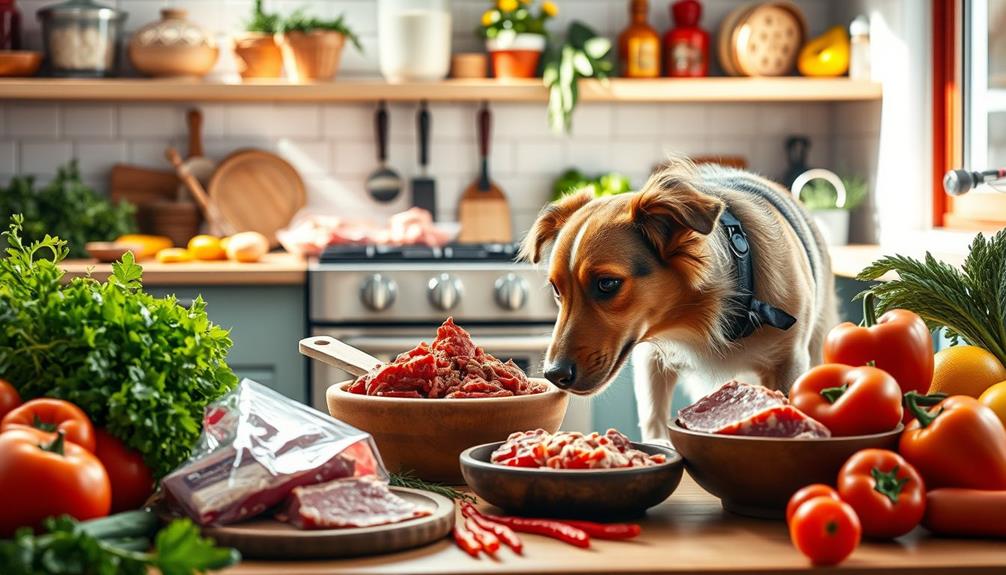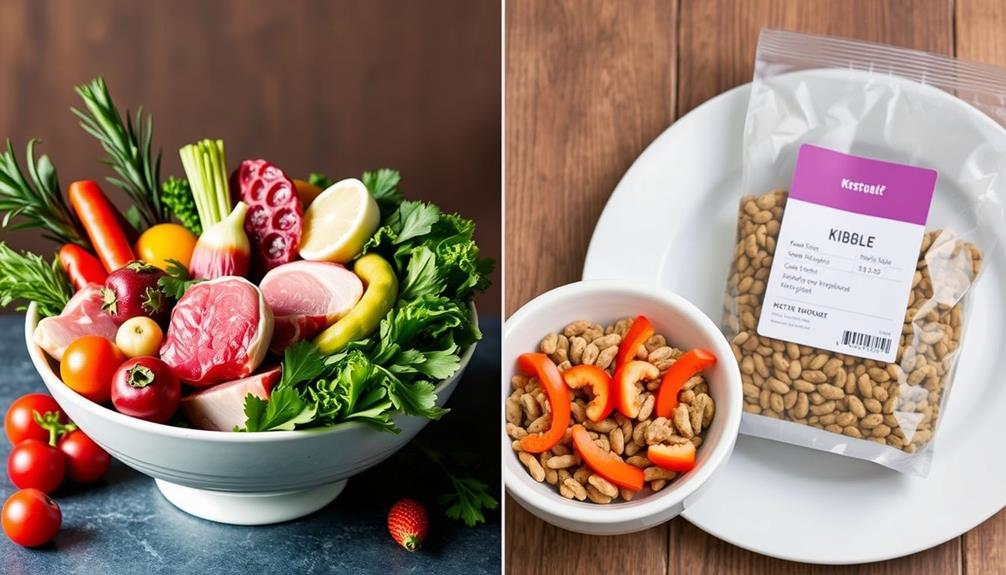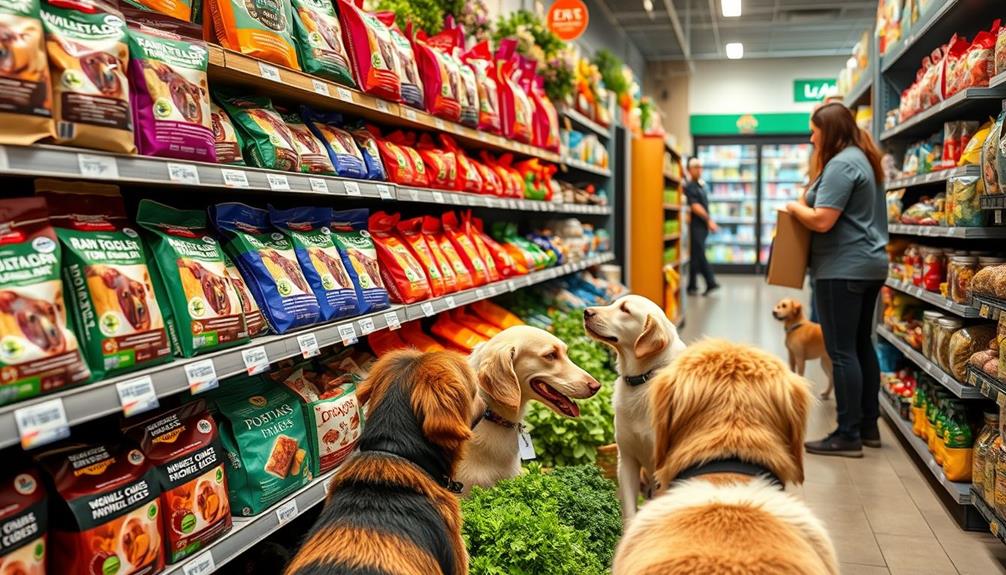Yes, dogs can have raw food, and many owners report positive changes in skin, coat, and energy levels. A balanced raw diet typically includes 70% muscle meat, 10% raw edible bones, and various organs and veggies. However, there are risks like bacterial contamination and potential nutritional deficiencies, so it's crucial to handle raw ingredients safely. Consult your vet before making any dietary changes and introduce raw food gradually to avoid digestive issues. To guarantee a healthy shift and proper nutrition, knowing more can truly help make the best choices for your furry friend. Can dogs eat raw food? This is a common question among pet owners considering a raw diet. While it is possible for dogs to eat raw food, it’s important to do thorough research and seek guidance from a veterinary professional. By understanding the potential benefits and risks, you can make an informed decision that aligns with your dog’s specific dietary needs and preferences.
Key Takeaways
- Dogs can eat raw food, but it's essential to ensure a balanced diet to avoid nutritional deficiencies.
- A raw diet can improve skin, coat health, energy levels, and dental hygiene in dogs.
- Risks include bacterial contamination and potential choking hazards from whole bones, requiring careful handling.
- Consult a veterinarian or certified nutritionist before transitioning to a raw diet for proper guidance.
- Gradually introduce raw food over 7-10 days to prevent gastrointestinal upset in dogs.
Overview of Raw Dog Food
When considering your dog's diet, raw dog food can be an intriguing option. This type of diet typically consists of uncooked ingredients like raw meat, bones, and organs, designed to align with your dog's natural dietary needs.
The BARF diet, introduced by Ian Billinghurst in 1993, encourages feeding dogs a raw diet that mirrors their evolutionary eating patterns. Many pet owners find that a raw diet can promote better overall health, similar to the benefits seen in proper hamster care.
For a balanced raw diet, the recommended BARF model ratio includes 70% muscle meat, 10% raw edible bone, 7% vegetables, 5% liver, 5% other secreting organs, 2% seeds or nuts, and 1% fruit.
While many pet owners advocate for raw dog food due to potential benefits like improved skin and coat health, better digestion, and increased energy levels, these claims aren't universally accepted by veterinary nutritionists.
It's crucial to be aware of the risks, including harmful bacteria and the potential for nutritional deficiencies. Proper handling of raw ingredients is critical to guarantee safety for both you and your dog.
Before making any dietary changes, consult your veterinarian to verify you're meeting your dog's nutritional requirements effectively.
Benefits of Raw Diet

A raw diet can offer numerous benefits for your dog, making it an appealing choice for many pet owners. One of the standout advantages of a raw diet for dogs is healthier skin and shinier coats, thanks to the moisture and healthy fats found in raw dog foods. Many pet owners also find that incorporating healthy dog snacks into their dog's diet complements the raw food approach.
You'll likely notice reduced shedding as well. Additionally, dogs on a balanced raw diet tend to produce smaller, firmer stools because their digestive systems can better utilize nutrients, leading to improved nutrient absorption.
Another significant benefit is improved dental health. Chewing raw meat and bones naturally cleans your dog's teeth, reducing plaque buildup and promoting oral hygiene.
You'll also find that many dogs experience increased energy levels and liveliness on a raw diet, which can be linked to better digestion and fewer indigestible carbohydrates.
Moreover, a raw diet may help reduce allergies in dogs, as it often eliminates common allergens found in processed kibble. This shift can lead to improved overall health and well-being for your furry friend.
Risks and Health Concerns
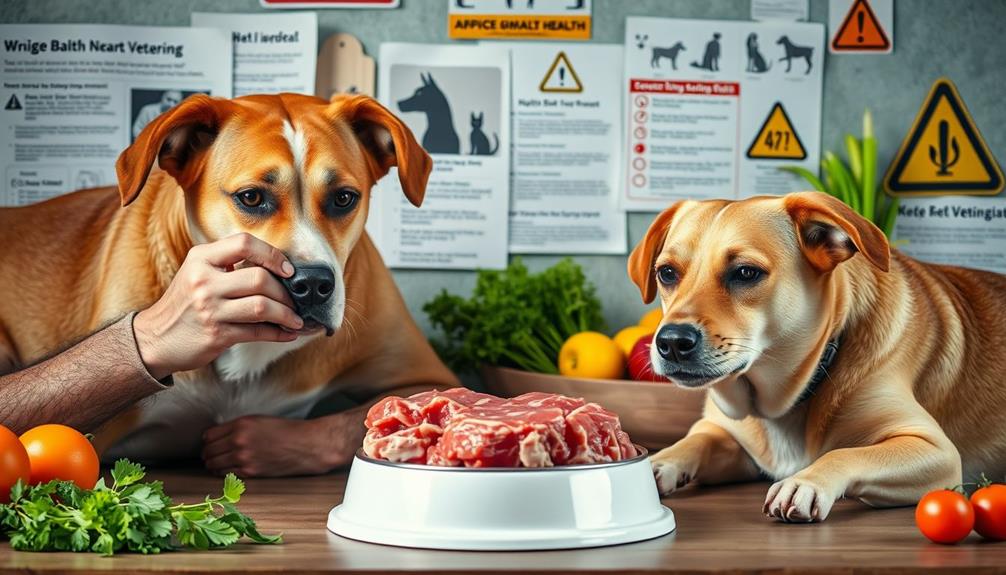
Choosing a raw food diet for your dog comes with significant risks and health concerns that every pet owner should consider. The CDC and FDA warn that raw dog food diets can lead to bacterial contamination, with about 25% of samples testing positive for harmful bacteria like Salmonella and Listeria monocytogenes. This poses health risks not just to dogs but also to humans, particularly immunocompromised individuals, children, and the elderly.
Additionally, cold medications overview highlights the importance of selecting the right treatment for health-related issues, which can be paralleled in considering your pet's diet.
Furthermore, unbalanced raw food diets may result in nutritional deficiencies over time, affecting your dog's overall well-being. You should also be cautious about whole bones in raw diets, as they can present choking hazards or cause broken teeth and internal injuries.
These safety concerns raise valid vet concerns, leading many veterinarians and animal care facilities to refuse to treat animals on raw diets due to the documented hazards associated with potential bacterial contamination and nutritional imbalances.
Ultimately, while a raw dog food diet may seem appealing, it's essential to weigh these risks carefully to guarantee the health and safety of your beloved pet.
Guidelines for Safe Feeding
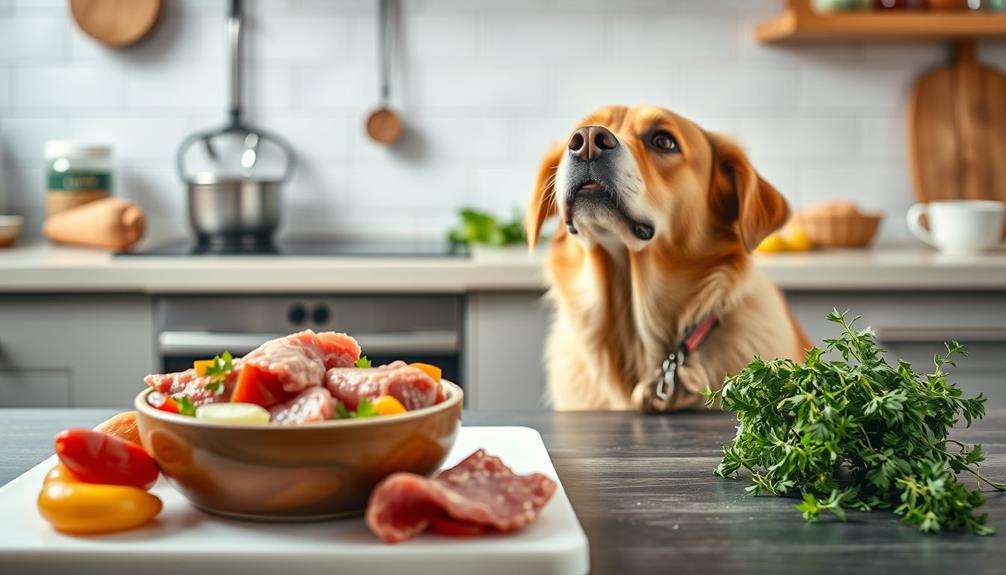
Guaranteeing your dog's safety while feeding a raw food diet requires careful planning and adherence to guidelines. Before altering, always consult with a veterinarian or a certified animal nutritionist to create a diet designed specifically for your dog's health needs.
Implement proper hygiene practices to minimize the risk of bacterial contamination. Here's a quick reference table:
| Safe Feeding Practices | Description |
|---|---|
| Gradual Introduction | Mix raw food with current diet over 7-10 days. |
| Balanced Diet | Include muscle meat, bones, organs, and vegetables. |
| Safe Storage | Keep raw food frozen, thaw in the refrigerator. |
When feeding raw, start with a small percentage to prevent gastrointestinal upset. A balanced diet is vital for providing essential nutrients and avoiding deficiencies. Always wash your hands and disinfect surfaces after handling raw meat. By following these guidelines, dog owners can guarantee safe feeding practices that support their pet's health and well-being.
Nutritional Balance and Recommendations
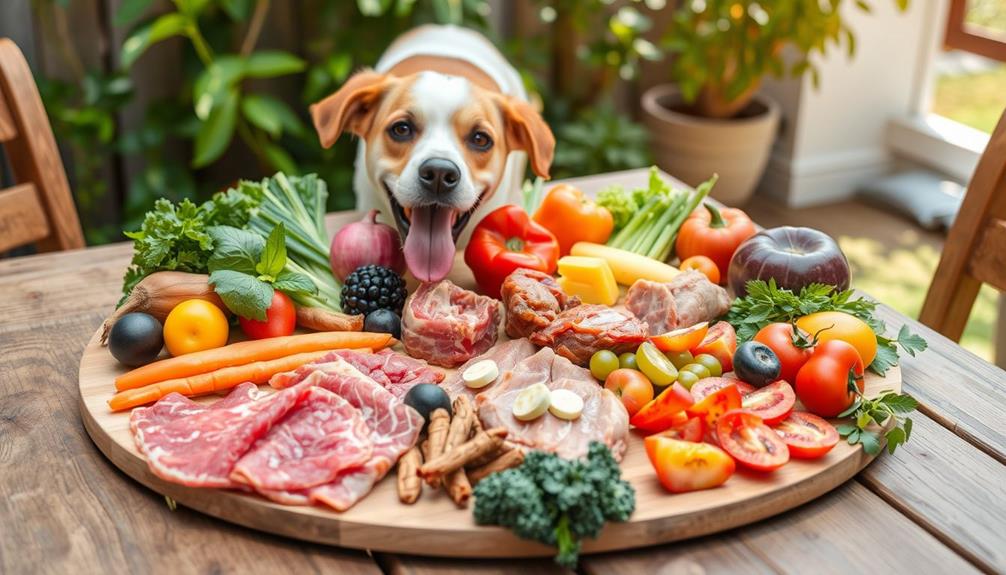
Achieving nutritional balance in your dog's raw food diet is essential for their overall health and wellness. A properly balanced raw diet should include 70% muscle meat, 10% raw edible bone, 7% vegetables, 5% liver, 5% other organ meats, 2% seeds or nuts, and 1% fruit. This combination guarantees your dog receives all the essential nutrients they need, much like how essential oils for respiratory health can support overall well-being in humans.
When meal planning, keep in mind that a lack of organ and bone inclusion can lead to nutrient deficiencies. Typically, dogs require about 2-3% of their body weight in food daily. Active or younger dogs may need more, while senior or inactive dogs might require less.
To avoid gastrointestinal issues, shift gradually to a raw diet. Start with 25% raw food mixed with 75% of their current diet, and progress to a full raw diet over about 10 days.
It's wise to consult with a veterinary nutritionist when preparing homemade raw diets. They can help guarantee your dog's meals are nutritionally balanced and tailored to their specific health needs, unlike many commercial dog food brands that may not meet these standards.
Frequently Asked Questions
What Do Vets Say About Raw Diet for Dogs?
Vets often express concerns about raw diets for dogs, warning you about potential bacterial contamination and nutritional imbalances. They recommend consulting a veterinary nutritionist to guarantee your dog's diet meets essential health standards.
Why Is Raw Food Not Recommended for Dogs?
Feeding your dog raw food's like playing with fire; it can bring serious health risks. Harmful bacteria lurk in raw diets, and nutritional imbalances can lead to severe issues, making safer options a better choice.
How Do I Make Sure Raw Food Is Safe for My Dog?
To guarantee raw food's safe for your dog, always wash your hands after handling it, use separate utensils, clean surfaces thoroughly, and store it properly. Regular vet check-ups will help monitor your dog's health too.
What Information Is on Raw Dog Food?
Raw dog food packaging contrasts essential nutrients and ingredient quality. You'll find details on meat, organs, and bones ratio, AAFCO compliance, feeding guidelines based on your dog's weight, and sourcing transparency for informed choices.
Conclusion
In the end, choosing a raw food diet for your dog can be a game-changer, but it's not without its challenges. You've got to weigh the benefits against potential risks, like a tightrope walker balancing above a crowd. By following safety guidelines and ensuring nutritional balance, you can help your furry friend thrive. So, if you decide to go raw, remember: it's all about keeping your pup healthy and happy for years to come!

